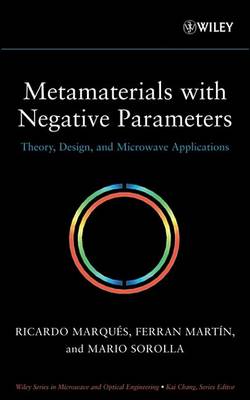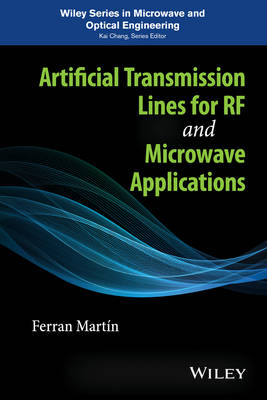Wiley Series in Microwave and Optical Engineering
1 primary work • 2 total works
Book 183
Metamaterials with Negative Parameters
by Ricardo Marques, Ferran Martin, and Mario Sorolla
Published 30 April 2007
The first general textbook to offer a complete overview of metamaterial theory and its microwave applications Metamaterials with Negative Parameters represents the only unified treatment of metamaterials available in one convenient book. Devoted mainly to metamaterials that can be characterized by a negative effective permittivity and/or permeability, the book includes a wide overview of the most important topics, scientific fundamentals, and technical applications of metamaterials. Chapter coverage includes: the electrodynamics of left-handed media, synthesis of bulk metamaterials, synthesis of metamaterials in planar technology, microwave applications of metamaterial concepts, and advanced and related topics, including SRR- and CSRR-based admittance surfaces, magneto- and electro-inductive waves, and sub-diffraction imaging devices. A list of problems and references is included at the end of each chapter, and a bibliography offers a complete, up-to-daterepresentation of the current state of the art in metamaterials.
Geared toward students and professionals alike, Metamaterials with Negative Parameters is an ideal textbook for postgraduate courses and also serves as a valuable introductory reference for scientists and RF/microwave engineers.
Geared toward students and professionals alike, Metamaterials with Negative Parameters is an ideal textbook for postgraduate courses and also serves as a valuable introductory reference for scientists and RF/microwave engineers.
Artificial Transmission Lines for RF and Microwave Applications
by Ferran Martin
Published 1 July 2015
This book presents and discusses alternatives to ordinary transmission lines for the design and implementation of advanced RF/microwave components in planar technology. This book is devoted to the analysis, study and applications of artificial transmission lines mostly implemented by means of a host line conveniently modified (e.g., with modulation of transverse dimensions, with etched patterns in the metallic layers, etc.) or with reactive loading, in order to achieve novel device functionalities, superior performance, and/or reduced size. The author begins with an introductory chapter dedicated to the fundamentals of planar transmission lines. Chapter 2 is focused on artificial transmission lines based on periodic structures (including non-uniform transmission lines and reactively-loaded lines), and provides a comprehensive analysis of the coupled mode theory. Chapters 3 and 4 are dedicated to artificial transmission lines inspired by metamaterials, or based on metamaterial concepts.
These chapters include the main practical implementations of such lines and their circuit models, and a wide overview of their RF/microwave applications (including passive and active circuits and antennas). Chapter 5 focuses on reconfigurable devices based on tunable artificial lines, and on non-linear transmission lines. The chapter also introduces several materials and components to achieve tuning, including diode varactors, RF-MEMS, ferroelectrics, and liquid crystals. Finally, Chapter 6 covers other advanced transmission lines and wave guiding structures, such as electroinductive-/magnetoinductive-wave lines, common-mode suppressed balanced lines, lattice-network artificial lines, and substrate integrated waveguides. Artificial Transmission Lines for RF and Microwave Applications provides an in-depth analysis and discussion of artificial transmission lines, including design guidelines that can be useful to researchers, engineers and students.
These chapters include the main practical implementations of such lines and their circuit models, and a wide overview of their RF/microwave applications (including passive and active circuits and antennas). Chapter 5 focuses on reconfigurable devices based on tunable artificial lines, and on non-linear transmission lines. The chapter also introduces several materials and components to achieve tuning, including diode varactors, RF-MEMS, ferroelectrics, and liquid crystals. Finally, Chapter 6 covers other advanced transmission lines and wave guiding structures, such as electroinductive-/magnetoinductive-wave lines, common-mode suppressed balanced lines, lattice-network artificial lines, and substrate integrated waveguides. Artificial Transmission Lines for RF and Microwave Applications provides an in-depth analysis and discussion of artificial transmission lines, including design guidelines that can be useful to researchers, engineers and students.

